Disclosure: This article contains affiliate links. We may earn a commission from purchases at no extra cost to you, which helps our travel content.
The moment my feet touched the warm golden sands of Tayrona National Park, I knew I had found something extraordinary. Sacré bleu, what a revelation! After 15 years of controlling air traffic patterns across North America, finding myself beneath Colombia's palm-fringed coastline was like discovering a parallel universe where time follows different rules. This natural reserve along Colombia's Caribbean coast has become my winter sanctuary—a place where the precision of my professional life gives way to the beautiful chaos of nature. While the park's main beaches draw crowds, there exist hidden coastal treasures that remain delightfully secluded. During my recent winter escape, I mapped out seven of these lesser-known beaches, each offering couples a perfect blend of adventure and intimacy. Pack your swimwear and sense of wonder as I guide you through a week of coastal exploration in one of South America's most breathtaking national parks.
Playa Cristal: The Hidden Jewel
Of all Tayrona's hidden beaches, Playa Cristal (also known as Playa del Muerto) remains the crown jewel for those willing to venture beyond the well-trodden paths. Unlike its more famous counterparts, this beach requires advanced planning—only 300 visitors are permitted daily, creating an atmosphere of exclusivity that rewards the prepared traveler.
My journey to Playa Cristal began at the Neguanje entrance, less frequented than the main park gates. After a 20-minute boat ride along the coastline—where the Caribbean's turquoise waters perform their hypnotic dance against the Sierra Nevada mountains—we arrived at a crescent of sand so pristine it appeared untouched by human presence.
What distinguishes Playa Cristal is its extraordinary water clarity. As an avid snorkeler, I've explored coastlines across four continents, but few match the underwater visibility here. The name 'Crystal Beach' isn't mere hyperbole—it's a precise description. Floating above the coral formations with my snorkel set revealed an underwater cosmos of tropical fish, their colors more vivid against the white sandy bottom.
Couples seeking romance will appreciate the beach's natural divisions—small coves separated by rocky outcroppings provide natural privacy. My recommendation is to arrive early (the first boats leave around 9:00 am) and stake claim to one of these secluded spots before the limited daily quota fills.
During my visit last February, the afternoon brought a brief tropical shower—a perfect moment to take shelter beneath the canopy of a small beachside restaurant and sample fresh ceviche while watching raindrops create momentary dimples across the otherwise glass-like sea.
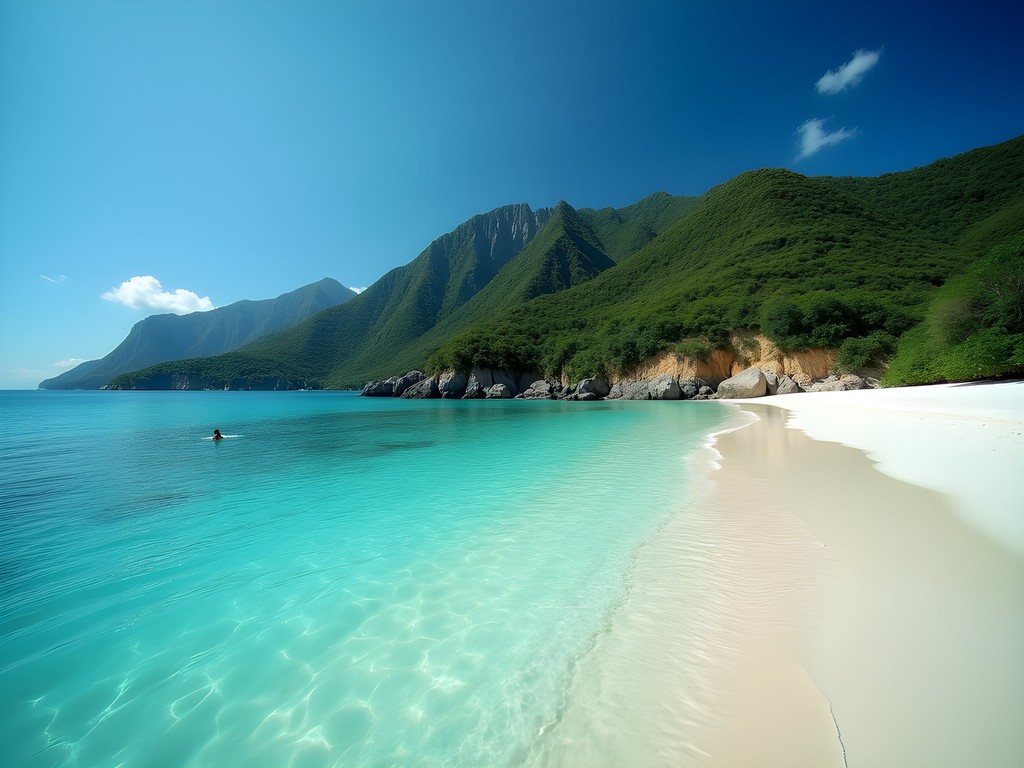
💡 Pro Tips
- Reserve your spot for Playa Cristal at least one day in advance during peak season (December-February)
- Bring cash for the boat transportation (approximately 25,000-30,000 COP round trip)
- Pack reef-safe sunscreen as the water clarity means stronger sun exposure than you might expect
Playa Nudista: Secluded Freedom
Despite its suggestive name, Playa Nudista isn't officially a nudist beach—though its extreme seclusion has made it popular among those seeking freedom from both crowds and conventional beachwear. This hidden gem lies beyond a challenging 45-minute hike from the more popular Cabo San Juan, ensuring that only the most determined travelers discover its pristine shores.
The path to reach this sanctuary isn't marked on most tourist maps, which is precisely why I sought it out. My air traffic controller's instinct for precision navigation served me well as I followed barely visible trails through dense tropical vegetation. The route requires crossing several rocky outcroppings—I was grateful for my water shoes which provided crucial grip on the slippery surfaces.
The reward for this effort? A 300-meter stretch of golden sand embraced by massive granite boulders that create a natural sense of privacy and protection. During my February visit, my partner and I spent an entire afternoon here without seeing more than a dozen other souls.
What makes Playa Nudista truly special is the dramatic meeting of ecosystems. The dense rainforest extends almost to the shoreline, creating pockets of shade beneath palm trees where couples can retreat from the midday sun. The water here is slightly rougher than at other Tayrona beaches, with a gentle but persistent surf that creates a soothing soundtrack.
"C'est un petit paradis," I whispered to myself as we unpacked our picnic lunch. The beach's remoteness means there are no facilities or vendors—true wilderness that demands self-sufficiency but rewards with unparalleled tranquility.
As the afternoon light softened, we discovered tide pools formed among the rocks at the eastern end of the beach. These natural aquariums teemed with small crabs, colorful snails, and tiny fish—miniature ecosystems that captivated us for hours with their complexity and beauty.
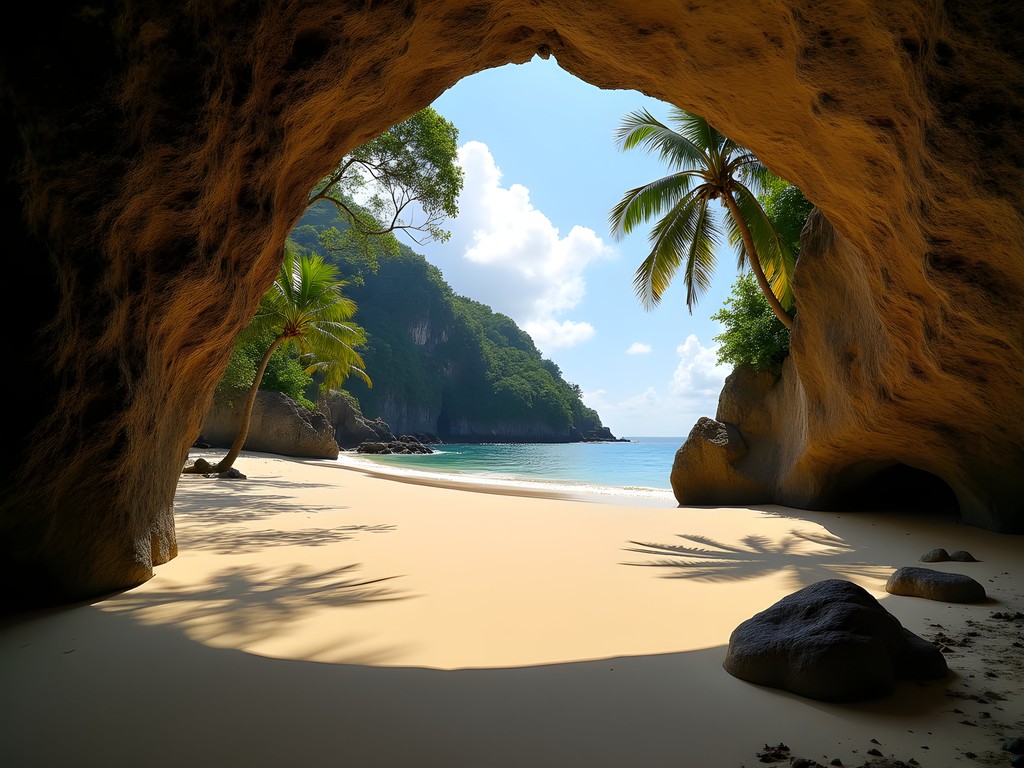
💡 Pro Tips
- Pack sufficient water (at least 2 liters per person) as there are no services at this beach
- Download offline maps before your hike as cellular service is non-existent
- Time your visit to allow at least 90 minutes for the return hike before sunset
Playa Brava: For the Adventurous Couple
There's something deeply satisfying about earning your paradise, and Playa Brava demands precisely that kind of effort. This wild stretch of coastline lives up to its name ('Brave Beach') with powerful waves that crash dramatically against the shore—a stark contrast to the calmer waters found elsewhere in Tayrona.
The journey to Playa Brava became the highlight of my week-long exploration of Tayrona's hidden beaches. The trail begins near El Cabo San Juan, ascending steeply through dense rainforest before opening to breathtaking coastal vistas. The hike takes approximately two hours each way, with elevation changes that challenge even experienced hikers. My hiking daypack proved invaluable, with enough capacity for water, provisions, and camera equipment while maintaining comfort throughout the journey.
What separates Playa Brava from other beaches in Tayrona is its raw, untamed character. Here, nature dictates the terms of your visit. Swimming is generally unsafe due to strong currents and absence of lifeguards, but this limitation is compensated by the hypnotic beauty of watching powerful waves sculpt the shoreline. For couples seeking meaningful connection, there's nothing quite like sitting together in respectful awe of nature's power.
During my visit, I encountered a local artisan who had established a small, rustic ecolodge at the western end of the beach. For around 40,000 COP per person, visitors can stay overnight in simple hammocks or basic cabins—an experience I highly recommend for couples seeking to disconnect completely. The absence of electricity means nights are illuminated solely by candlelight and the brilliant canopy of stars above.
The most magical moment of my Tayrona adventure occurred here at dawn, as the first light revealed a family of howler monkeys moving through the canopy directly above our cabin. Their haunting calls echoed across the beach as the sun painted the sky in watercolor hues of pink and gold—a moment of perfect synchronicity between time, place, and companionship.
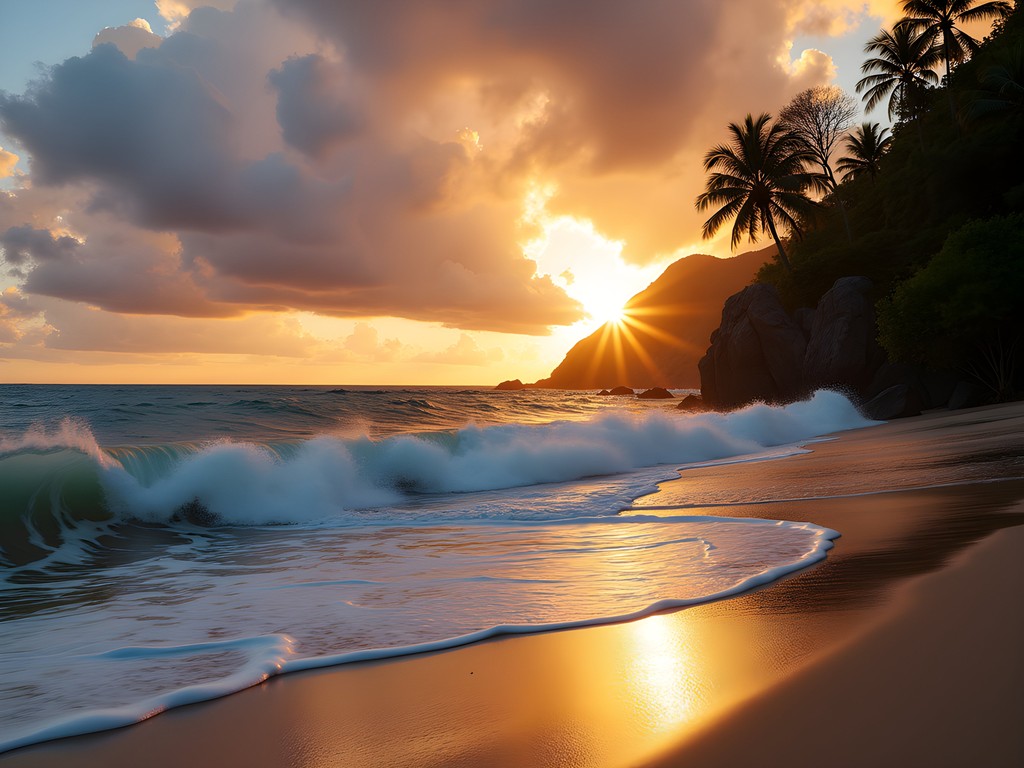
💡 Pro Tips
- Start the hike to Playa Brava early (before 10am) to avoid afternoon heat and ensure enough daylight for return
- If planning to stay overnight, bring a headlamp and book your hammock/cabin in advance during high season
- Strong insect repellent is essential, as mosquitoes are particularly active at dawn and dusk
Piscina Natural: Nature's Perfect Swimming Pool
Some geological formations seem so perfectly designed for human enjoyment that they appear almost intentional. Tayrona's Piscina Natural (Natural Pool) is precisely such a marvel—a protected cove where a barrier of offshore rocks creates a natural swimming area sheltered from the otherwise dangerous Caribbean currents.
Less hidden than truly overlooked, this gem sits between the popular beaches of Arrecifes and La Aranilla. Most tourists hurry past, eager to reach the more famous stretches of sand, creating an opportunity for in-the-know travelers to enjoy relative solitude. During my three visits to this spot across different February trips, I've never found it overcrowded—a rarity in Tayrona's accessible areas.
The approach reveals itself gradually: a small opening in the coastal vegetation leads to a modest beach that doesn't immediately impress. But wade into the water, and the magic reveals itself. The natural rock barrier creates a swimming area with water so clear you can observe fish darting between your legs without snorkeling equipment. The seafloor alternates between soft sand and patches of seagrass, creating a mosaic of aquatic habitats.
For couples, Piscina Natural offers a perfect balance of safety and seclusion. The protected waters mean you can float together without concern for dangerous currents, while the relatively small beach area creates an intimate setting for conversation and connection. I witnessed several couples engaging in what appeared to be deeply meaningful conversations while partially submerged in the crystal waters—the setting seemingly encouraging a special kind of openness.
The experience reaches its zenith at low tide when the rock barrier becomes more prominent, and small tide pools form with trapped marine life. These natural aquariums become windows into the Caribbean ecosystem, revealing colorful snails, tiny crabs, and occasionally, small octopi navigating their temporarily confined spaces.
My technique for maximizing enjoyment here is counterintuitive: arrive around noon when most visitors are seeking lunch or shade. Pack a simple picnic, find a spot beneath one of the few trees at the beach's edge, and enjoy a leisurely meal before taking advantage of the often-deserted pool during the traditional siesta hour.
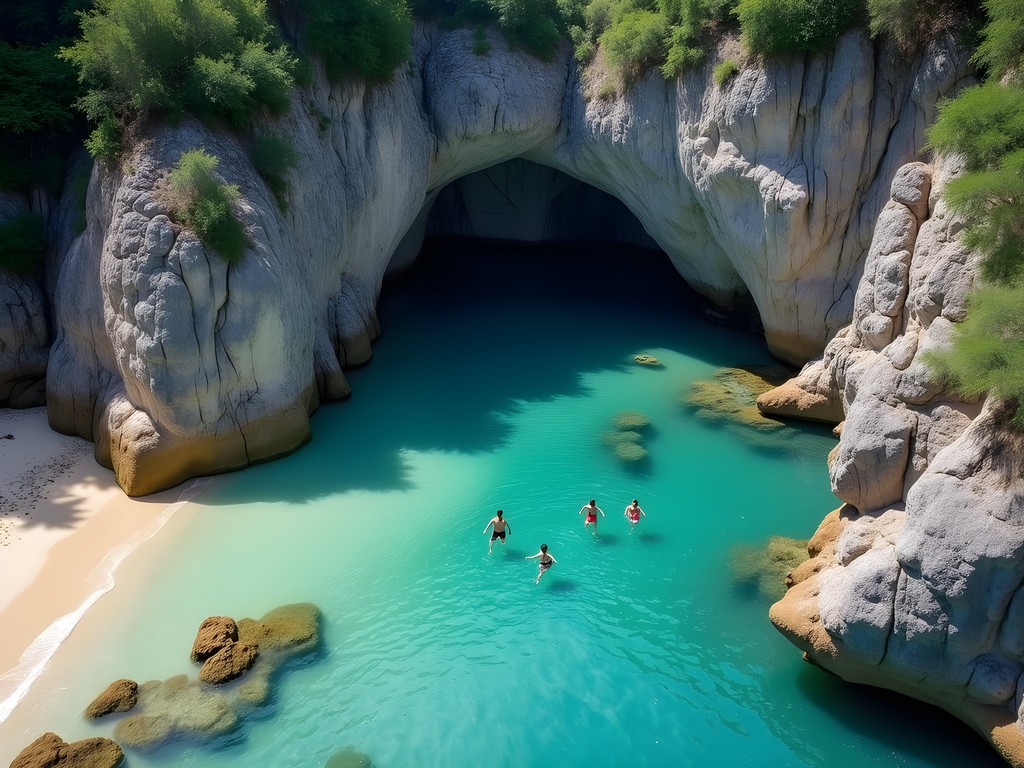
💡 Pro Tips
- Check tide schedules before visiting—low tide offers the calmest waters and best visibility
- Bring underwater cameras as the protected waters make for excellent photography conditions
- Water shoes are helpful for navigating the occasionally rocky entrance to the pool
Playa Escondida: The Beach That Lives Up to Its Name
True to its name ('Hidden Beach'), Playa Escondida remains one of Tayrona's best-kept secrets. This small stretch of paradise isn't marked on official park maps and receives virtually no mention in mainstream guidebooks—precisely why it captured my attention during conversations with local fishermen in nearby Taganga before my park visit.
Accessing Playa Escondida requires both determination and local knowledge. The trail begins near the western edge of Cañaveral Beach, where a barely visible path disappears into dense vegetation. Without GPS coordinates (which I'm deliberately not sharing to preserve its character), finding this beach becomes an exercise in exploration and trust. The 30-minute hike involves navigating through jungle terrain and scrambling down a moderately steep embankment—an adventure that filters out casual tourists.
The reward is nothing short of magical: a perfectly formed half-moon bay of golden sand, typically occupied by no more than a handful of visitors. The beach is framed by dramatic rock formations that extend into the water, creating natural boundaries that enhance its sense of seclusion. Unlike many of Tayrona's beaches where swimming is dangerous or prohibited, Playa Escondida features a protected area where gentle waves make swimming relatively safe during calm weather.
During my discovery of this hidden gem, I spent an afternoon watching frigate birds perform their aerial ballet against the backdrop of Sierra Nevada mountains. The beach's orientation provides spectacular sunset views—a perfect setting for couples seeking a romantic end to their day of exploration.
What makes Playa Escondida truly special is its untouched quality. There are no facilities, no vendors, and importantly, very little human impact. The beach appears much as it might have centuries ago when indigenous Tayrona people inhabited these lands. This pristine quality creates a profound sense of connection with Colombia's natural heritage—something increasingly rare in our era of developed tourism.
"Dans le silence de la nature, on entend son propre cœur," as my grandmother would say—in nature's silence, one hears one's own heart. This beach offers precisely that opportunity for couples: a chance to hear yourselves and each other without distraction.

💡 Pro Tips
- Ask for directions from park rangers rather than following online maps which typically don't show this location
- Pack out absolutely everything you bring in—this pristine environment deserves meticulous care
- Plan to leave at least 90 minutes before park closing time to navigate the return trail safely
Bahía Concha: The Accessible Secret
Sometimes the best-hidden secrets lie in plain sight. Bahía Concha (Shell Bay) technically sits just outside Tayrona National Park's official boundaries but shares the same stunning ecosystem. This geographical technicality creates a wonderful opportunity for couples seeking the Tayrona experience without the entrance fees or hiking requirements of the main park.
Unlike the more remote beaches on this list, Bahía Concha is accessible by vehicle—a 30-minute drive from Santa Marta along a bumpy but manageable road. This accessibility might suggest crowds, but surprisingly, the beach remains relatively uncongested even during peak season. The reason becomes apparent upon arrival: the bay extends for nearly two kilometers, allowing visitors to spread out far more than at Tayrona's compact beaches.
During my exploration of Bahía Concha last February, I discovered that the beach's character changes dramatically along its length. The central area near the access road attracts local families and features a few simple restaurants serving fresh seafood. However, walking just 15 minutes in either direction rewards with significant solitude. The northern end, my preferred section, features dramatic rock formations that create intimate coves perfect for couples seeking privacy.
What distinguishes Bahía Concha is its relaxed atmosphere. Without the strict regulations of the national park, visitors can enjoy simple pleasures often prohibited within Tayrona—setting up shade canopies, bringing coolers with beverages, and even enjoying sunset hours when the main park is closed. This flexibility makes it ideal for couples wanting a full day of relaxation without adhering to rigid park schedules.
The water at Bahía Concha deserves special mention—the protected bay creates gentler swimming conditions than many Tayrona beaches. During my visit, I spent hours exploring the underwater environment with my underwater camera, capturing footage of colorful fish navigating around rocky outcroppings near shore.
A local fisherman I befriended, Carlos, shared that Bahía Concha translates to 'Shell Bay' because of the abundance of seashells historically found along its shores. While shell collecting is discouraged to preserve the ecosystem, careful observation still reveals beautiful specimens partially buried in the sand—nature's own treasure hunt for the observant visitor.
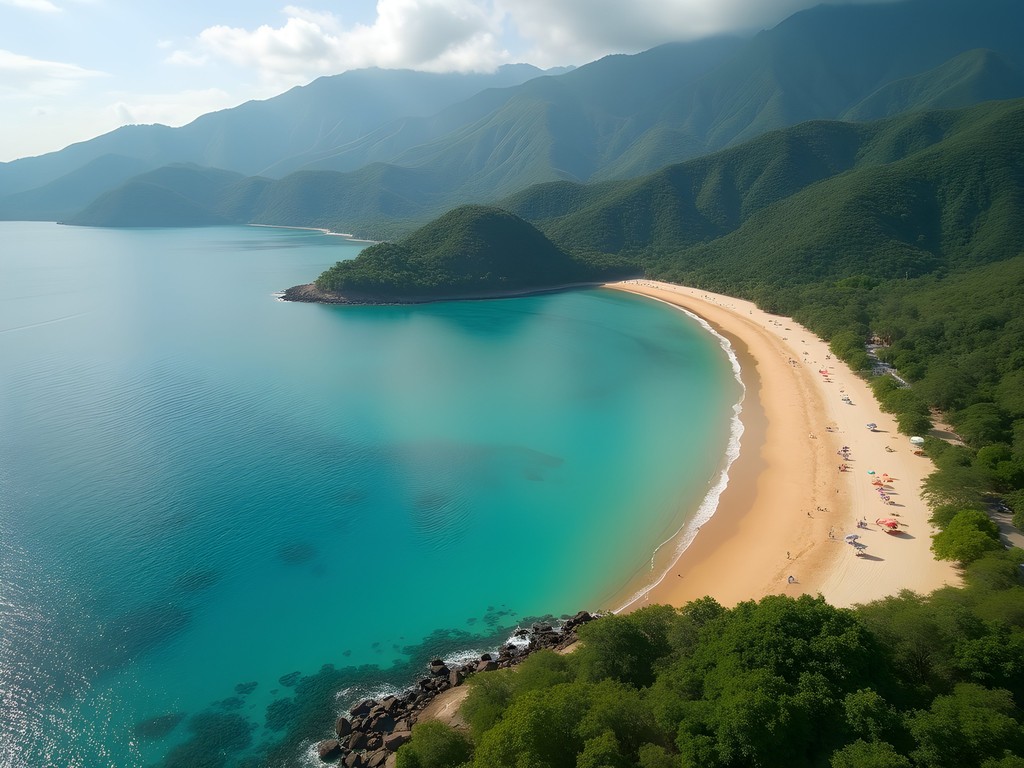
💡 Pro Tips
- Visit on weekdays if possible, as local residents from Santa Marta sometimes visit on weekends
- The northern end offers more seclusion and better snorkeling opportunities around the rock formations
- Bring cash for entrance (approximately 5,000 COP per person) and meals at local restaurants
Playa Los Naranjos: Where River Meets Sea
My final hidden beach recommendation takes us to the western boundary of Tayrona National Park, where the Piedras River meets the Caribbean Sea at Playa Los Naranjos. This unique ecological intersection creates one of Colombia's most fascinating coastal environments—a place where freshwater and saltwater ecosystems blend in a dance of biodiversity.
Reaching Los Naranjos requires either a 4WD vehicle or the more adventurous option I chose: hiring a local boat from Taganga for a scenic coastal journey. The beach's relative inaccessibility keeps visitor numbers low, especially compared to Tayrona's eastern sections.
What immediately distinguishes Los Naranjos is its dramatic color palette. The river carries mineral-rich sediment from the Sierra Nevada mountains, creating striking color contrasts where it meets the turquoise Caribbean. This natural phenomenon is particularly vivid during the winter months when increased rainfall amplifies the river's flow and mineral content.
For couples with an interest in wildlife, Los Naranjos offers unparalleled opportunities. The estuarine environment attracts an astonishing variety of birds—during my day here, I documented over 20 species including magnificent frigatebirds, brown pelicans, and the striking plumage of kingfishers. My compact binoculars proved invaluable for observing wildlife without disturbing natural behaviors.
Beyond birdwatching, the beach offers a fascinating study in ecological transitions. Walking from the rivermouth toward either end of the beach reveals how vegetation changes with increasing salinity—a living laboratory of adaptation and specialization. The western section features dramatic rock formations that create natural tidal pools during low tide, perfect for gentle exploration together.
Perhaps most magical is the experience of swimming in the river mouth area, where cool freshwater flows over warmer saltwater. These distinct temperature layers create a surreal swimming experience—like moving between different worlds with each stroke. The phenomenon is most pronounced in the morning before sun-warmed ocean temperatures diminish the contrast.
During my February visit, I encountered a local conservation team monitoring sea turtle nesting sites—a reminder of the beach's ecological importance and the ongoing efforts to protect Colombia's natural heritage. Their passion for preservation reinforced my own commitment to responsible travel and cultural documentation.
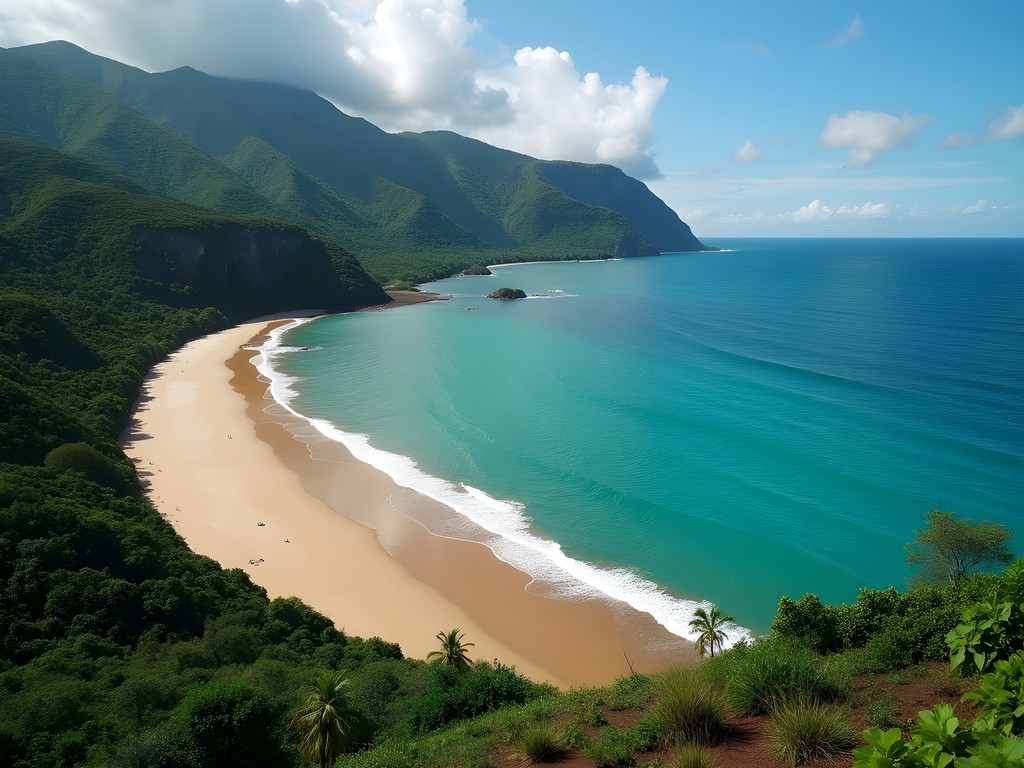
💡 Pro Tips
- Bring insect repellent as the freshwater environment can attract more mosquitoes than typical beaches
- The safest swimming areas are away from the immediate river mouth where currents can be unpredictable
- If arriving by boat, negotiate a specific pickup time with your captain as cell service is unreliable
Final Thoughts
As my week exploring Tayrona's hidden beaches came to an end, I found myself sitting on the warm sands of Playa Cristal, watching the sun cast its golden farewell across the Caribbean. These seven beaches—each with its distinct character and charm—offer couples something increasingly rare in our hyperconnected world: genuine discovery and shared wonder. Unlike the precision of air traffic patterns I navigate professionally, these coastal treasures remind us that some of life's most profound experiences emerge from unplanned moments and unmarked paths. If you visit during winter months as I did, you'll find perfect weather conditions and slightly fewer visitors than high season. Comme on dit chez nous, the journey matters as much as the destination—so take your time, venture beyond the obvious, and allow Tayrona's hidden beaches to weave themselves into your shared story. The memories you create here will outlast any souvenir.
✨ Key Takeaways
- Tayrona's hidden beaches offer an intimate alternative to the park's more frequented coastal areas
- Winter months (December-February) provide ideal weather conditions with less rainfall than other seasons
- Each beach has a distinct ecological character, from protected swimming coves to dramatic river mouths
- Advance planning is essential for beaches with visitor limitations like Playa Cristal
📋 Practical Information
Best Time to Visit
December through February (dry season)
Budget Estimate
$50-100 USD per day per couple (excluding accommodation)
Recommended Duration
5-7 days
Difficulty Level
Moderate

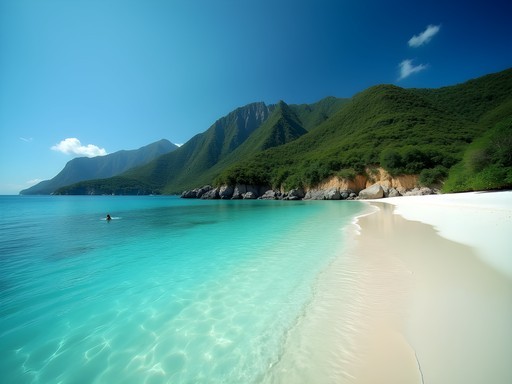

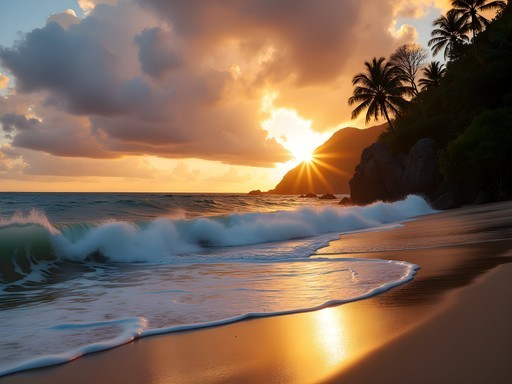
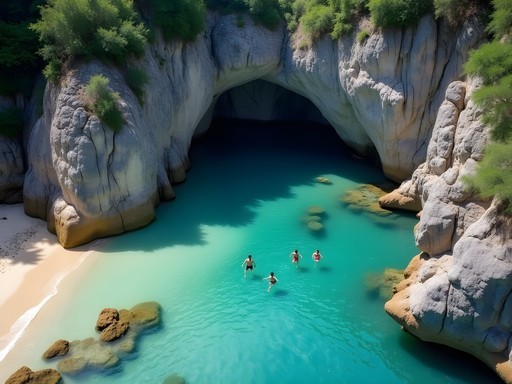
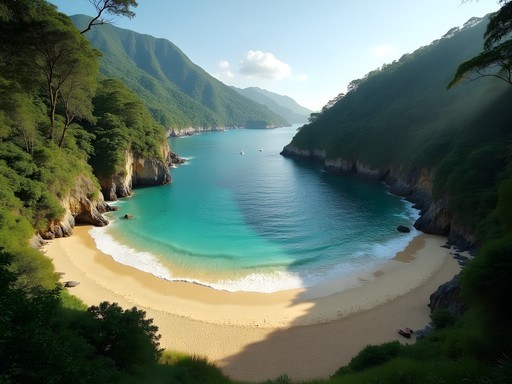
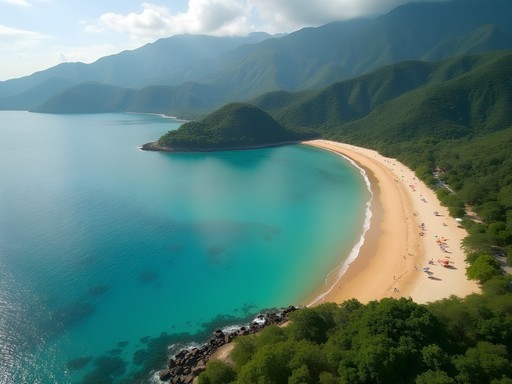


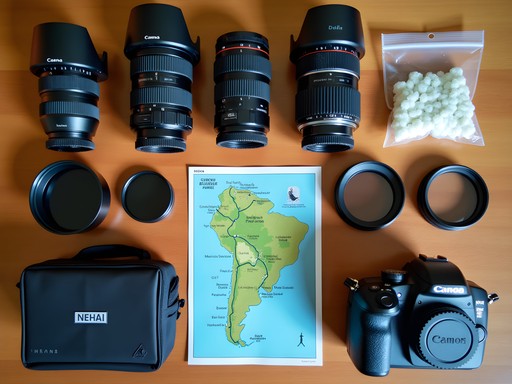
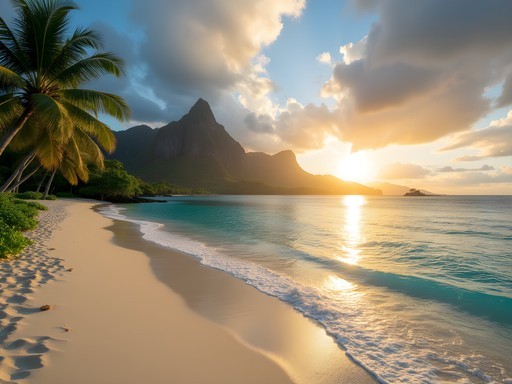

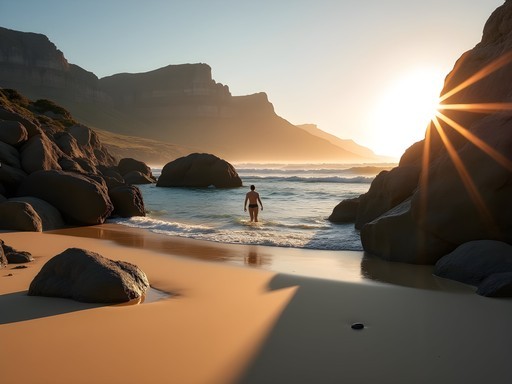
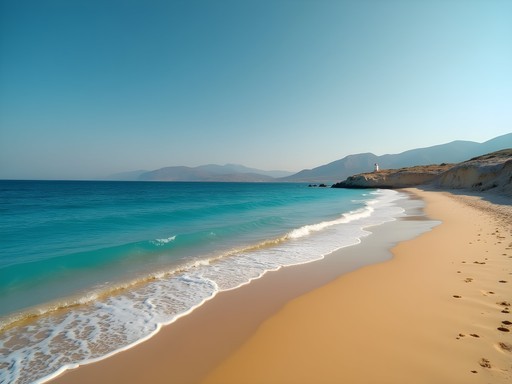
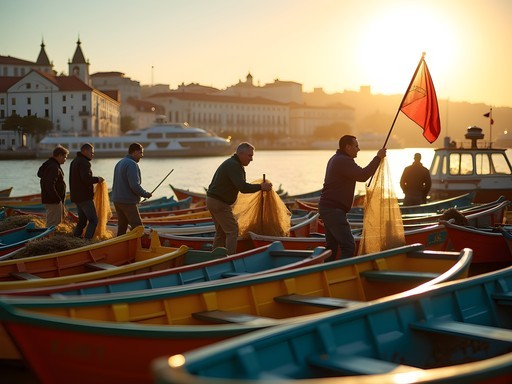
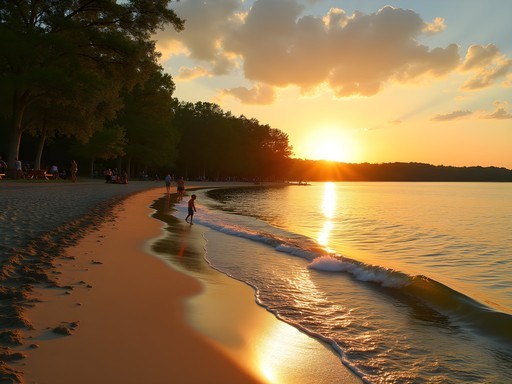
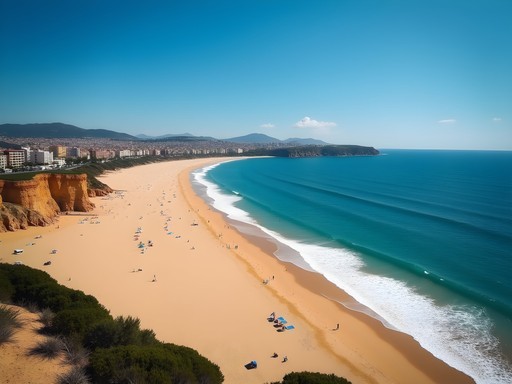
Comments
citygal
Playa Brava looks incredible! Did anyone stay at the eco-huts there? Considering it for our anniversary trip but wondering if it's worth the splurge.
trippro
Genesis, what's the best way to get to the park from Santa Marta? Public bus or private shuttle?
coffeeguide
Not Genesis but we took the public bus from Santa Marta - super cheap (about 8,000 COP) and an adventure in itself! Leaves from the market. Just get there early.
Savannah Torres
We visited Tayrona with our kids (8 and 11) last year and they still talk about Piscina Natural! The natural rock barrier makes it perfect for families. We spent hours there while they explored the little fish pools. Didn't brave Playa Nudista with the little ones though 😂 One thing to add - the hike to some of these beaches can be challenging with kids and gear. We used our hiking carrier for our youngest when she got tired, absolute lifesaver!
citygal
How long was the hike to Piscina Natural with kids? Planning to take my 9-year-old next spring.
Savannah Torres
It's about 45 minutes from the entrance, but the path is well-marked. Bring plenty of water and snacks! Your 9-year-old should handle it fine.
coffeeguide
Just got back from Tayrona last month and Playa Cristal was absolutely the highlight! Crystal clear water just like Genesis described. Pro tip: arrive EARLY. They limit visitors to preserve the beach and spots fill up fast. We got there at 8am and it was perfect - had the place almost to ourselves for a couple hours. Bring snorkel gear if you can!
photorider
These beaches look amazing! How safe is it for solo travelers? Planning to visit in November.
Sage Dixon
I solo traveled there last year and felt completely safe. Just take normal precautions - don't flash expensive gear, be aware of your surroundings. The park has security and most trails are well-traveled during daylight. November should be perfect - just after rainy season!
photorider
Thanks so much! That's really helpful to know.
globelegend
I'm planning my first trip to Colombia and Tayrona is top of my list! Is it safe for solo travelers? And how many days would you recommend staying to see all these hidden beaches? Your post has me so excited!
greengal
I went solo last month and felt completely safe! Just take normal precautions like anywhere. I'd say minimum 2 nights in the park to really enjoy it without rushing.
Genesis Ferguson
Totally agree with @greengal - I'd recommend 3 days/2 nights minimum to really explore these hidden gems without rushing. The park felt very safe, with rangers and plenty of other travelers around. Just remember there's no electricity in most camping areas, so bring a good headlamp for nighttime!
Jean Wells
Having visited Tayrona three times over the past decade, I appreciate your focus on the lesser-known beaches. The ecological diversity between each location is remarkable - from the coral formations at Playa Cristal to the rugged terrain surrounding Playa Brava. One point worth noting: the park authorities have implemented stricter visitor quotas since my last visit in 2023. I'd recommend booking park entry at least 48 hours in advance during high season (December-January and Easter week). Also, the water conditions at Playa Brava can be treacherous - swimming there requires extreme caution even for experienced swimmers. Did you encounter any of the indigenous Kogi people during your explorations of the more remote areas?
Genesis Ferguson
Thanks for that important safety note about Playa Brava, Jean! And yes, the visitor quotas are definitely stricter now. I did briefly encounter a small group of Kogi people on the trail to Playa Brava - they were extremely reserved but acknowledged us with a nod. I tried to be respectful of their space and didn't take photos.
greengal
OMG I just got back from Colombia and I'm kicking myself for missing Piscina Natural! Your photos are STUNNING and that description of the natural pool has me planning a return trip already. Did you camp inside the park? We stayed in Santa Marta and just did day trips.
starbuddy
We camped at Cabo San Juan for two nights - totally worth it! You get the beaches to yourself in the early morning before day-trippers arrive.
Genesis Ferguson
I did exactly what @starbuddy mentioned - camped at Cabo San Juan. It's basic but magical! And yes, having early morning beach access before the crowds is priceless. I used my dry bag backpack which was absolutely essential for keeping camera gear safe during those beach hikes!
starbuddy
Playa Cristal was our favorite too! That water is unreal 😍
oceanclimber
Great post! How difficult was it to reach Playa Nudista? Did you need a guide or can you find it on your own?
Genesis Ferguson
You can definitely find it on your own! There's a small trail that branches off from the main path after Cabo San Juan. Just look for a wooden sign pointing to 'Playa Nudista' - it's about a 15-minute walk from there.
oceanclimber
Perfect, thanks for the tip! Can't wait to explore it next month.
Venture X
Premium card with 2X miles, $300 travel credit, Priority Pass